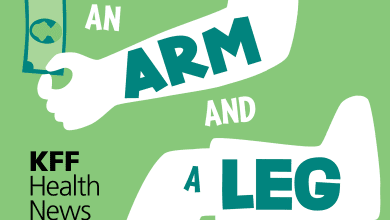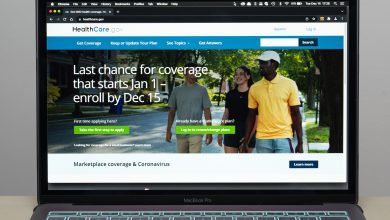Health Insurance Price Data: It’s Out There, but It’s Not for the Faint of Heart
That’s the response about three weeks into an information dump of huge proportions. Well being insurers are posting their negotiated charges for nearly each sort of medical service they cowl throughout all suppliers.
However a lot knowledge is flowing in from insurers — tens of hundreds of colossal digital recordsdata from a single insurer will not be uncommon — that it might nonetheless be weeks earlier than knowledge corporations put it into usable kinds for its supposed targets: employers, researchers, and even sufferers.
“There’s knowledge on the market; it’s simply not accessible to mere mortals,” mentioned Sabrina Corlette, a researcher at Georgetown College’s Middle on Well being Insurance coverage Reforms.
Insurers are complying with federal guidelines geared toward worth transparency that took impact July 1, she and others mentioned. Realistically, although, shopper use of the information might have to attend till personal corporations synthesize it — or extra federal necessities begin to kick in subsequent 12 months geared toward making it simpler for shoppers to make use of the worth data to buy scheduled medical care.
So why publish costs? The speculation is that making public this array of costs, that are more likely to fluctuate broadly for a similar care, will assist average future prices by competitors or improved worth negotiations, though none of that may be a assure.
Hospitals final 12 months got here below an identical directive, which stems from the Inexpensive Care Act, to publish what they’ve agreed to simply accept from insurers — and the quantities they cost sufferers paying money. But many dragged their feet, saying the rule is dear and time-consuming. Their commerce affiliation, the American Hospital Affiliation, sued unsuccessfully to halt it. Many hospitals simply by no means complied and federal authorities enforcement has confirmed lax.
Whereas authorities regulators have despatched greater than 350 warning letters to hospitals, and have elevated the potential civil penalty fines from $300 a day to as much as $5,500, solely two hospitals have been fined thus far.
The requirement for insurers is broader than that confronted by hospitals, though it doesn’t embody money costs. It contains negotiated charges paid not solely to hospitals, but in addition to surgical procedure facilities, imaging companies, laboratories, and even medical doctors. Quantities billed and paid for “out-of-network” care are additionally included.
Penalty fines for not posting may be increased than these confronted by hospitals — $100 a day per violation, per affected enrollee, which shortly provides up for medium- or large-size insurers or self-insured employers.
“We’re seeing excessive compliance charges due to the excessive penalties,” mentioned Jeff Leibach, a accomplice with the consulting agency Guidehouse.
The info is posted on public web sites, however it may be onerous to entry — primarily due to measurement, but in addition as a result of every insurer approaches it in a different way. Some, like Cigna, require would-be viewers to chop and paste a really lengthy URL right into a browser to get to a desk of contents of the worth recordsdata. Others, together with UnitedHealthcare, created web sites that straight checklist a desk of contents.
Nonetheless, even the tables of contents are large. UnitedHealthcare’s webpage warns it might take “as much as 5 minutes” for the web page to load. When it does, there are greater than 45,000 entries, every listed by the 12 months and identify of the plan or employer for job-based insurance policies.
For shoppers, accessing any single plan can be a problem. For the time being, it’s additionally tough for employers, who wish to use the data to find out how effectively their insurers negotiate in contrast with others.
Employers “actually need somebody to obtain and import the information,” which is in a format that may be learn by computer systems however isn’t simply searchable, mentioned Randa Deaton, vp of purchaser engagement on the Purchaser Enterprise Group on Well being, which represents massive employers.
After an preliminary peek, she has seen large variation in prices.
“In a single plan, I might see negotiated charges that ranged from $10,000 to $1 million for a similar service,” mentioned Deaton.
However the bigger image received’t be clear till extra of the information is cleaned: “The query is what’s the story this knowledge will inform us?” she mentioned. “I don’t suppose we have now the reply but.”
Congress and administration coverage rule makers anticipated that the insurer knowledge can be overwhelming and that non-public corporations and researchers would step in to do the deep evaluation and knowledge manufacturing.
A type of corporations is Turquoise Health, which was “overjoyed by the quantity of knowledge,” mentioned Marcus Dorstel, vp of operations.
The corporate, one among a quantity aiming to commercialize the information, had by mid-July downloaded greater than 700,000 unique files, or about half a petabyte. For context, 1 petabyte is the equivalent of 500 billion pages of ordinary typed textual content. Its expectation, Dorstel added, is that the entire obtain will find yourself within the 1- to 3-petabyte vary.
Turquoise hopes to share organized knowledge with its paying prospects quickly — and supply it freed from cost to unusual shoppers someday after that on its web site, which already lists obtainable hospital costs.
What’s doable proper now?
Let’s say sufferers know they want a particular take a look at or process. Can they give the impression of being on-line at insurer knowledge postings to decide on a remedy website that will probably be most cost-effective, which could possibly be useful for individuals who have but to fulfill their annual deductible and are on the hook for some or all the price?
“Possibly a person with a laptop computer might have a look at one of many recordsdata for one plan,” mentioned Dorstel, however shoppers would discover it tough to check amongst insurers — and even throughout all of the plans provided by a single insurer.
Take into account, for instance, what it takes to attempt to discover the negotiated worth of a specific sort of mind scan, an MRI, from a particular insurer.
The primary hurdle: finding the correct file. Google “transparency in protection” or “machine-readable recordsdata” with an insurer’s identify and outcomes may pop up. Self-insured employers are additionally presupposed to publish the information.
Subsequent step: Discover the precise plan, usually from a desk of contents that may embody tens of hundreds of names as a result of insurance coverage corporations supply so many kinds of protection merchandise or have many employer shoppers that have to be listed as effectively.
Downloading and deciphering the tangle of codes to pinpoint one describing a particular service is subsequent. It helps to have the service code, one thing a affected person might not know.
Beginning Jan. 1, one other rule takes impact that might present shoppers with some reduction.
It entails the apps and different instruments that some insurers already present for policyholders to allow them to estimate prices when making ready for a go to, take a look at, or process.
The brand new rule bolsters what data is obtainable and requires insurers who don’t supply such instruments to have them prepared by Jan. 1. Insurers should make obtainable on-line, or on paper, if requested, the affected person’s price for a list of 500 government-selected, frequent “shoppable companies,” together with knee replacements, mammograms, a bunch of kinds of X-rays, and, sure, MRIs.
The next 12 months — 2024 — insurers should present shoppers with the fee sharing quantity for all companies, not simply these preliminary 500.
One other regulatory layer stems from the No Surprises Act, which took impact this 12 months. Its overarching objective is to cut back the variety of insured sufferers who get higher-than-anticipated payments for care from out-of-network suppliers. A part of the legislation requires suppliers, together with hospitals, to offer an upfront “good religion estimate” for nonemergency care when requested. Proper now, that a part of the legislation applies solely to sufferers who’re uninsured or utilizing money to pay for his or her care, and it isn’t clear when it will kick in for insured sufferers utilizing their protection advantages.
When it does, insurers will probably be required to offer policyholders price data earlier than they obtain care in a format described as an advance clarification of advantages — or EOB. It could embody how a lot the supplier will cost, how a lot the insurer can pay — and the way a lot the affected person will owe, together with any excellent deductible.
In idea, meaning there could possibly be each an upfront EOB and a worth comparability instrument, which a shopper may use earlier than deciding the place or from whom to get a service, mentioned Corlette at Georgetown.
Nonetheless, Corlette mentioned, she stays skeptical, given all of the complexities, that “these instruments will probably be obtainable in a usable format, in actual life, for actual individuals on wherever close to the timeline envisioned.”
KHN (Kaiser Well being Information) is a nationwide newsroom that produces in-depth journalism about well being points. Along with Coverage Evaluation and Polling, KHN is among the three main working packages at KFF (Kaiser Household Basis). KFF is an endowed nonprofit group offering data on well being points to the nation.
USE OUR CONTENT
This story may be republished free of charge (details).



